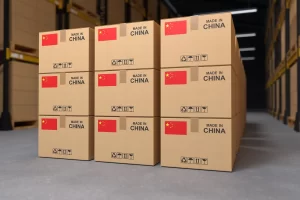As an Executive Search firm, we have specialists in various sectors. At Zavala Civitas we specialize in China and its different markets and, in this article, we want to share an update on modern Chinese consumers.
Everyone is talking these days about the economic power of modern Chinese consumers with over 600 million active online shoppers. As an executive search firm, we understand that modern Chinese consumers have become the most desired consumers by brands.
The China market currently has a wide variety of consumers and markets, and consumer-oriented companies are realizing that they will need China to drive their growth in the next decade. But, for these companies to keep the rate, they will also need to understand what different groups of consumers there are today, each with their own characteristics and purchasing preferences. Depending on the type of sector, executive search companies in China have extensive experience in guiding new companies in the Chinese market.
Major modern Chinese consumers in China:
- The New Middle Class
China’s new middle class is driving the country’s economic growth: China’s plans to achieve an urbanization rate of over 65% by 2030 will increase the number of middle-class families.
They spend less than 50% of their income on necessities, they are consumers who are willing to spend more on life experiences, gastronomy, wellness, lifestyle products and expensive but affordable products.
- Tuhao Rico
Tuhao means “New Rich”. Thanks to the Tuhao, China ranks second in terms of retail space in the purchase of luxury products and in 2016 accounted for a third of global spending on luxury.
This can include people who made large amounts of money in the 1980s and 1990s (a decade when entrepreneurship in China was new, unknown and risky), but the great majority of Tuhao people were born in humble or working-class backgrounds and became richer later. They have a bigger need to publicize their new status in life and like to convey and make known how luxurious their life is. Nevertheless, the Tuhao tend to be very altruistic people, this indicates that they are people who have not forgotten their roots and also make practical use of their money.
- Maturing Millennials
Millennials represent 31% of the total population in China, with a total amount of 415 million consumers. Born between the 80s and the 90s, these are currently reaching the maximum age of consumption. They are characterized by being educated, open-minded people and advanced in the use of technology.
These consumers have original tastes and stand out from the crowd; they are attracted to foreign brands because they feel closely connected to the rest of the world. They are wellness and fitness conscious, sophisticated and do not hesitate to spend a little more to get premium and luxury products.
They are heavily involved in e-commerce, browsing, shopping and interacting online.
- Generation Z
China’s is more brand conscious, most likely they were born with digital consumption. They think that domestic products are just as good as foreign ones and are caught between saving for big purchases and enjoying life.
They have a 75% market share in e-commerce and they value getting discounts and offers.
- Single Young People
Due to the high prices of purchasing property and the rising costs of starting a family, many young people are more likely to postpone marriage and parenthood.
With more disposable income and fewer responsibilities, this group prefers quality products and personalized service. They like to spend more money on physical training, tourism, personal products, appliances and professional growth.
We are Zavala Civitas, we have walked alongside our clients supporting them in matters ranging from Executive Search to broader Organizational Consulting. We are ready to be your talent and Organizational partner in China & East Asia. We are ready to tackle new challenges and risks with your firm.










